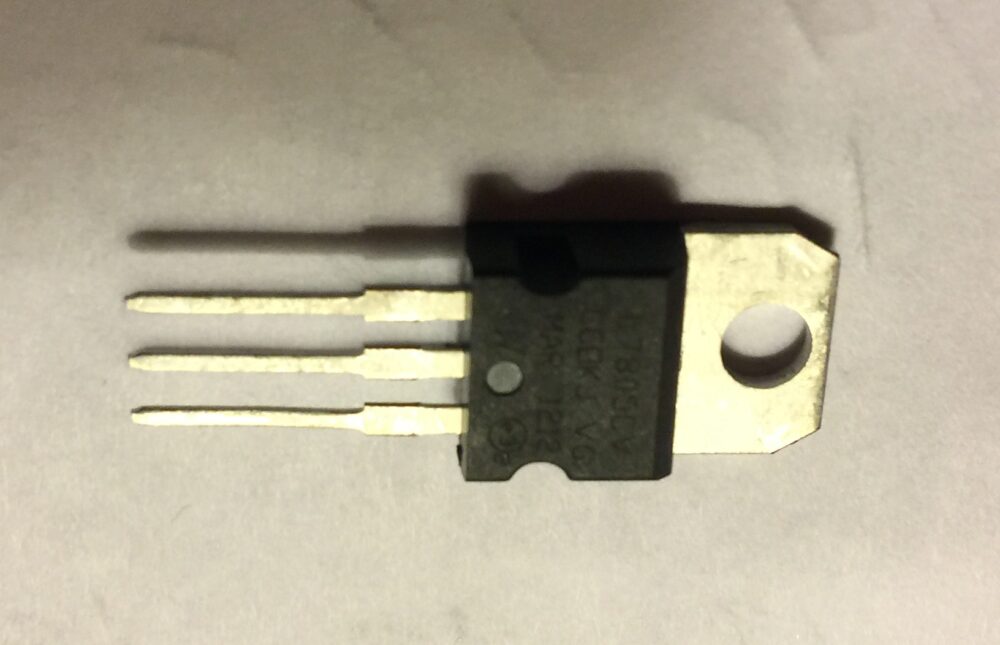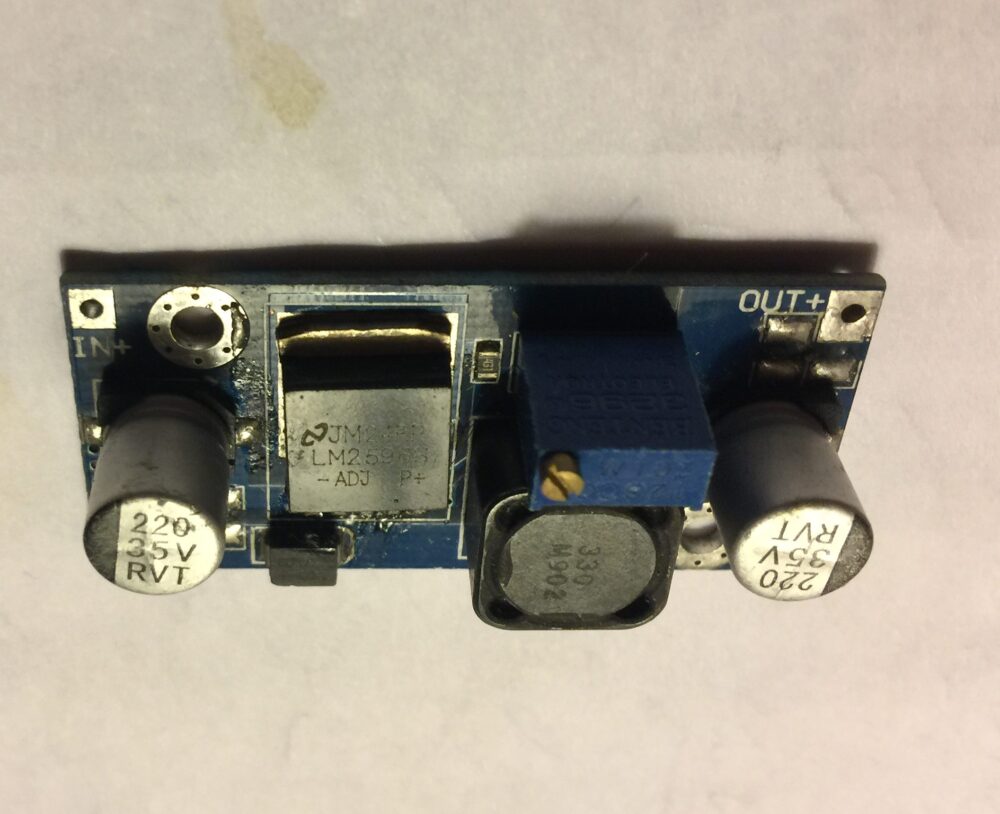Introduction to Voltage Regulation
We need voltage regulation when we need to reduce the voltage for our projects. If the components for your project require 5v, and you have a 9v battery, we can use a voltage regulator get to the 5v needed. There are two main ways that we can accomplish this: With a simple voltage regulator, such as the 7805, or a buck converter (which would be more efficient)
7805 Regulator

Although the 7805 regulator is very simple and small the problem is efficiency. Let’s assume that we are powering our project with a 9v battery. We will also assume that our load is 100mA, and we are using the 7805 regulator to reduce the voltage to 5v. In the 7805 regulator we will have a power loss of 4v (9-5) x 100mA. Our power loss would be 400mW! This power must be dissipated in the form of heat, so it’s a good idea to have a heat sink on the 7805 regulator.
The field device is consuming 500mW, and we are loosing 400mW. Since our project is powered by a battery, this would result in the battery running down quickly. It would only last about half the amount of time that we would normally expect.
DC-DC Buck Converter

The buck converter works a bit differently. It works by switching on and off to provide the desired output voltage. By regulating voltage in this manner, we are not wasting a lot of power. The buck converter is much more efficient. The buck converter is also adjustable, and can generally give us an output of 1.25v to 30v. This depends on the particular converter we get of course. This eliminates the necessity to purchase many different voltage regulators for various projects.
Cost Advantage
The price of a 7805 regulator is typically around $.50. The cost of a buck regulator is around $2. Even through the buck converter is more expensive, think about the long term cost. If your project is going to be powered by battery, you can definitely save by using a buck converter.
— Ricky Bryce
